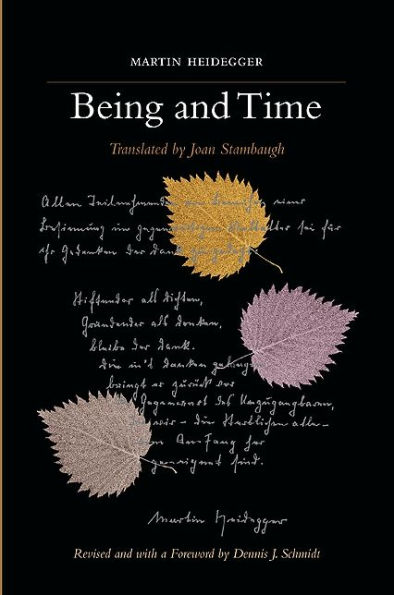5
1
9781438432762


Being and Time: A Revised Edition of the Stambaugh Translation available in Hardcover, Paperback

Being and Time: A Revised Edition of the Stambaugh Translation
- ISBN-10:
- 1438432763
- ISBN-13:
- 9781438432762
- Pub. Date:
- 07/01/2010
- Publisher:
- State University of New York Press
- ISBN-10:
- 1438432763
- ISBN-13:
- 9781438432762
- Pub. Date:
- 07/01/2010
- Publisher:
- State University of New York Press

Being and Time: A Revised Edition of the Stambaugh Translation
$24.95
Current price is , Original price is $24.95. You
$35.39
24.95
Out Of Stock

Product Details
| ISBN-13: | 9781438432762 |
|---|---|
| Publisher: | State University of New York Press |
| Publication date: | 07/01/2010 |
| Series: | SUNY series in Contemporary Continental Philosophy |
| Edition description: | Revised |
| Pages: | 512 |
| Product dimensions: | 6.00(w) x 8.90(h) x 1.20(d) |
About the Author
What People are Saying About This
From the B&N Reads Blog

